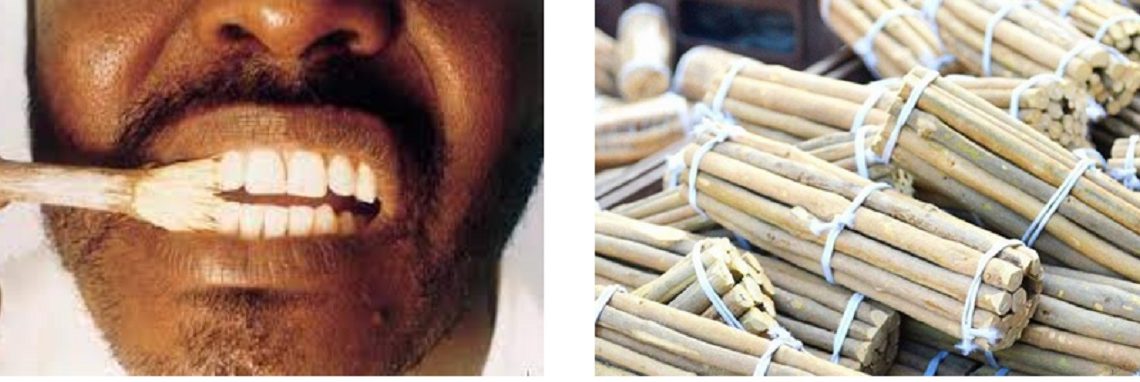

By Titilayo Kupoliyi
Tooth care is as old as human existence.
When tracing human history back over the centuries, many are surprised to learn that ancient people didn’t brush their teeth.
The first record of toothbrush was in Babylonian and Egyptian times.
The earliest chew sticks were discovered in Sumer in southern Mesopotamia in 3500 BC, an Egyptian tomb dating from 3000 BC.
Even as far back as 1600 BC, the Chinese were brushing their teeth with something they called chewing sticks.
The Greeks and Romans used toothpicks to clean their teeth, and toothpick-like twigs have been excavated in Qin dynasty tombs. In the Islamic world, the use of chewing stick miswak is considered a pious action and has been prescribed to be used before every prayer five times a day, and has been used by Muslims since the 7th century.
In ancient Indian, Twigs of Neem Tree was in use, which in its full bloom, can aid in healing by keeping the area clean and disinfected. In fact, even today, Neem twigs called datun are used for brushing teeth in India, although not hugely common.
Before then, brushing teeth wasn’t common. Even archaeologists claim that ancient people didn’t have cavities like we do today. There are a few reasons for this.
The main reason people started to take care of their teeth is because of a change in diet.
As civilizations became more industrial, so did the rise of processed food. With the presence of chemicals and preservatives in the food, the need for dental care grew.
The sugars in processed food rapidly increase the amount of plaque in your mouth. The chemicals erode enamel.
Ancient peoples didn’t have processed food. Their diet relied on fresh food that was full of nutrients.
They also ate a lot of fiber foods that helped scrub their teeth clean while they ate it.
Ancient peoples started to use what they called chewing sticks to brush their teeth. As the name implies, they chew the stick in order to scrub their teeth.
Europeans started to clean their teeth by taking a rag and rolling it in either salt or soot. Then they scrub the rag into their teeth.
The French doctor who is considered the father of modern dentistry, Pierre Fauchard, at first told people not to brush their teeth. Instead, he suggested that they take a toothpick or sponge, soak it in brandy, then rub their teeth and gums with the tool.
Here are a few other ways that people used to clean their teeth in the olden days.
- Brushing teeth with a toothbrush made from bones and animal bristles
- Using toothpaste made of crushed seashells and essential oils
- Using toothpaste mixed with ammonia or chlorophyll
- Wine-soaked toothpicks to brush teeth
- Using mouthwash made of urine
- Ancient Greece used dry toothpaste powder
- There are some similarities between traditional ways of brushing your teeth and modern ways of brushing your teeth. The emphasis on scrubbing and brushing remains the same. Even the need to use mouthwash is the same.
- The primary difference is the ingredients used.
Thankfully, we no longer use urine in our mouthwash.
However, we do use essential oils to effectively kill bacteria and freshen our mouths. The problem is that some modern types of toothpaste also add chemicals to their ingredients that could lead to some of the dental problems you face.
Culled
Subscribe to our Telegram and YouTube Channels and also join our Whatsapp Update Group